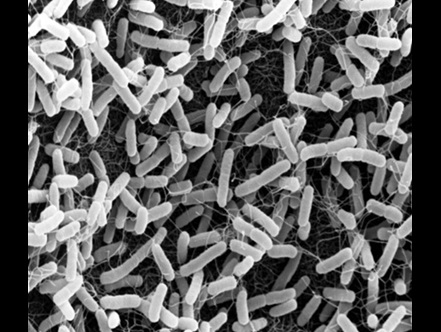Connecticut Water Quality Action Plans
Connecticut Total Maximum Daily Load Plans for Bacteria
Download a CT Water Quality Action Plan (WQAP) by Waterbody ID
The Public Comment Period has now closed for the CT Statewide Bacteria updates to the Core Document and 23 Watershed Appendices. To download a Draft TMDL Appendices, please visit the 2024 Draft Bacteria TMDL Webpage. Two public meetings were held on October 30, 2024, via ZOOM. The 11:00 a.m.-12:30 p.m. and 6:00 p.m. to 7:30 p.m. meeting recordings are now available. Thank you to all who participated. Responses to comments will be posted soon.

Bacteria Total Maximum Daily Loads
A Total Maximum Daily Load Plan or a TMDL is a type of Water Quality Action Plan that determines the amount of a pollutant that can be present in a waterbody without causing negative impacts to fish, wildlife, recreation, or other uses. TMDLs can also be used to protect waters by staying below this pollutant amount.
Bacteria is found in most places. Having high amounts of bacteria in a waterbody could indicate the presence of viruses and pathogens, that if ingested, can make people sick. The Department of Energy and Environmental Protection (CT DEEP) uses indicator bacteria to determine if the water quality is safe for activities such as swimming. The Department of Agriculture Bureau of Aquaculture (DABA) determines if marine waters are safe for shellfishing. If the results of bacteria monitoring show high amounts of bacteria, and that the waterbody is not meeting Water Quality Standards (WQS)the waterbody is considered impaired and not safe for those activities. Connecticut uses E. coli and Total coliform as an indicator of potential harmful pathogens in fresh waters and Enterococci for estuarine or marine recreational waters. To determine risk in shellfish harvesting areas, fecal coliform organisms are used (based on criteria recommended under the National Shellfish Sanitation Program; NSSP).
 In 2012, CT developed the Statewide Bacteria TMDL. This planning structure contains the Core Document which houses all the background information, references, and support materials. Each watershed has its own appendices with specific information about the watershed. Including the type of land use, land cover, impervious surface percentages, waterbody impairments, point sources, and waste load and load allocations. In 2024, CT DEEP updated the Core Document and developed 23 new watershed appendices. One of those updates is to include additional information in TMDLs to help with the development of Nonpoint Source Watershed Based Plans. Some of the 9 elements can be addressed in TMDL. Others will need to be addressed in a NPS plan, which only needs to include those elements that couldn’t be addressed in the TMDL. There are 9-element requirements for 319 funding of Watershed Based Plans. This updated process allows for a comprehensive Water Quality Action Plan that not only identifies the sources of pollution, but also identifies ways and actions that can be taken to fix it.
In 2012, CT developed the Statewide Bacteria TMDL. This planning structure contains the Core Document which houses all the background information, references, and support materials. Each watershed has its own appendices with specific information about the watershed. Including the type of land use, land cover, impervious surface percentages, waterbody impairments, point sources, and waste load and load allocations. In 2024, CT DEEP updated the Core Document and developed 23 new watershed appendices. One of those updates is to include additional information in TMDLs to help with the development of Nonpoint Source Watershed Based Plans. Some of the 9 elements can be addressed in TMDL. Others will need to be addressed in a NPS plan, which only needs to include those elements that couldn’t be addressed in the TMDL. There are 9-element requirements for 319 funding of Watershed Based Plans. This updated process allows for a comprehensive Water Quality Action Plan that not only identifies the sources of pollution, but also identifies ways and actions that can be taken to fix it.
2024 Public Notice
The Public Comment Period has now closed. Two public meetings were held on October 30, 2024, via ZOOM. The 11:00 a.m.-12:30 p.m. and 6:00 p.m. to 7:30 p.m. meeting recordings are now available. Thank you to all who participated. Responses to comments will be posted soon.
CT DEEP is an Affirmative Action and Equal Opportunity Employer that is committed to complying with the Americans with Disabilities Act. To request an accommodation contact us at 860-418-5910 or deep.accommodations@ct.gov.
Related Links:
-
Download a CT Water Quality Action Plan by Waterbody ID
Water Quality Alternative Restoration Plans (coming soon) -
Water Quality Protection Plans (coming soon)
- Draft 2024 Bacteria TMDLs
- Total Maximum Daily Load Plans for Nutrients (coming soon)
-
Total Maximum Daily Load Plans for Toxicity (coming soon)
- TMDL Fact Sheet
-
Long Island Sound Water Quality Monitoring Program and Information
Join our Water Quality Planning ListServ to receive updates and information about water quality.
For more information, contact us at (860) 424-3020.
Content updated January 6, 2025

